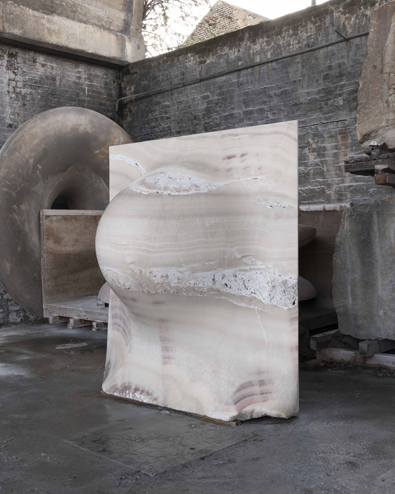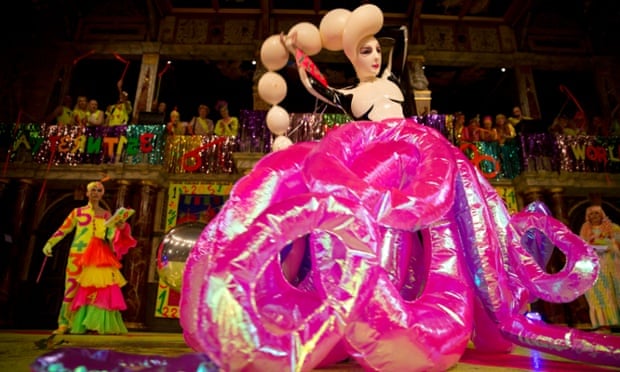Anish Kooper
Anish Kapoor became known in the 1980s for his geometric or biomorphic sculptures made using simple materials such as granite, limestone, marble, pigment, and plaster. These early sculptures are frequently simple, curved forms, usually monochromatic and brightly coloured, using powder pigment to define and permeate the form. "While making the pigment pieces, it occurred to me that they all form themselves out of each other. So I decided to give them a generic title,
A Thousand Names, implying infinity, a thousand being a symbolic number. The powder works sat on the floor or projected from the wall. The powder on the floor defines the surface of the floor and the objects appear to be partially submerged, like icebergs. That seems to fit inside the idea of something being partially there." Such use of pigment characterised his first high-profile exhibit as part of the
New Sculpture exhibition at the Hayward Gallery London in 1978.
In the late 1980s and 1990s, he was acclaimed for his explorations of matter and non-matter, specifically evoking the void in both free-standing sculptural works and ambitious installations. Many of his sculptures seem to recede into the distance, disappear into the ground or distort the space around them. In 1987, he began working in stone. His later stone works are made of solid, quarried stone, many of which have carved apertures and cavities, often alluding to, and playing with dualities (earth-sky, matter-spirit, lightness-darkness, visible-invisible, conscious-unconscious, male-female, and body-mind). "In the end, I’m talking about myself. And thinking about making nothing, which I see as a void. But then that’s something, even though it really is nothing."
Since 1995, he has worked with the highly reflective surface of polished stainless steel. These works are mirror-like, reflecting or distorting the viewer and surroundings. Over the course of the following decade Kapoor's sculptures ventured into more ambitious manipulations of form and space. He produced a number of large works, including
Taratantara (1999), a 35-metre-high piece installed in the Baltic Flour Mills in Gateshead, England, before renovation began there; and
Marsyas (2002), a large work consisting of three steel rings joined by a single span of PVC membrane that reached end to end of the 3,400-square-foot (320 m
2) Turbine Hall of Tate Modern. Kapoor's
Eye in Stone is permanently placed at the shore of the fjord in Lødingen in northern Norway as part of Artscap Nordland. In 2000, one of Kapoor's works,
Parabolic Waters, consisting of rapidly rotating coloured water, was shown outside the Millennium Dome in London.
The use of red wax is also part of his repertoire, evocative of flesh, blood, and transfiguration. In 2007, he showed
Svayambh (which translated from Sanskrit means "self-generated"), a 1.5-metre block of red wax that moved on rails through the Nantes Musée des Beaux-Arts as part of the Biennale estuaire; this piece was shown again in a major show at the Haus Der Kunst in Munich and in 2009 at the Royal Academy in London. Some his work blurs the boundaries between architecture and art. In 2008, Kapoor created
Memory in Berlin and New York for the Guggenheim Foundation, his first piece in Cor-Ten, which is formulated to produce a protective coating of rust. Weighing 24 tons and made up of 156 parts, it calls to mind Richard Serra’s huge, rusty steel works, which also invite viewers into perceptually confounding interiors.
In 2009, Kapoor became the first Guest Artistic Director of Brighton Festival. Kapoor installed four sculptures during the festival:
Sky Mirror at Brighton Pavilion gardens;
C-Curve at The Chattri,
Blood Relations (a collaboration with author Salman Rushdie); and
1000 Names, both at Fabrica. He also created a large site-specific work titled
The Dismemberment of Jeanne d’Arc and a performance-based installation:
Imagined Monochrome. The public response was so overwhelming that police had to re-divert traffic around
C Curve at the Chattri and exercise crowd control.
In September 2009, Kapoor was the first living artist to have a solo exhibition at the Royal Academy of Arts. As well as surveying his career to date, the show also included new works. On display were
Non-Object mirror works, cement sculptures previously unseen, and
Shooting into the Corner, a cannon that fires pellets of wax into the corner of the gallery. Previously shown at MAK, Vienna, in January 2009, it is a work with dramatic presence and associations and also continues Kapoor's interest in the self-made object, as the wax builds up on the walls and floor of the gallery the work slowly oozes out its form.
In spring 2011, Kapoor's work,
Leviathan, was the annual
Monumenta installation for the Grand Palais in Paris. Kapoor described the work as: "A single object, a single form, a single colour...My ambition is to create a space with in a space that responds to the height and luminosity of the Nave at the Grand Palais. Visitors will be invited to walk inside the work, to immerse themselves in colour, and it will, I hope, be a contemplative and poetic experience."
In 2011, Kapoor exhibited
Dirty Corner at the Fabbrica del Vapore in Milan. Fully occupying the site's "cathedral" space, the work consists of a huge steel volume, 60 metres long and 8 metres high, that visitors enter. Inside, they gradually lose their perception of space, as it gets progressively darker and darker until there is no light, forcing people to use their other senses to guide them through the space. The entrance of the tunnel is goblet-shaped, featuring an interior and exterior surface that is circular, making minimal contact with the ground. Over the course of the exhibition, the work was progressively covered by some 160 cubic metres of earth by a large mechanical device, forming a sharp mountain of dirt which the tunnel appears to be running through.











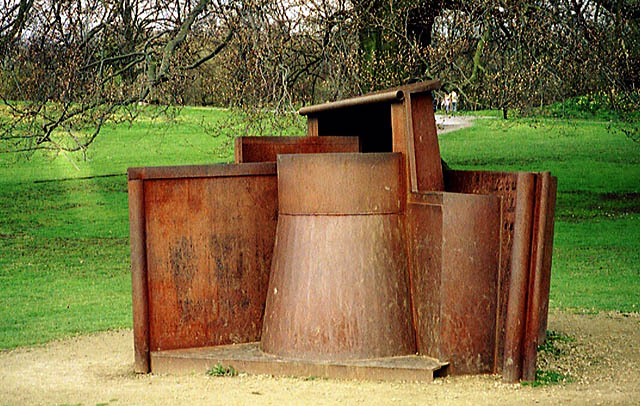

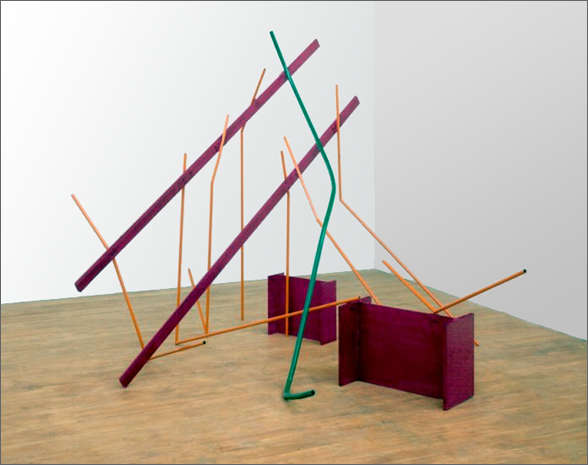





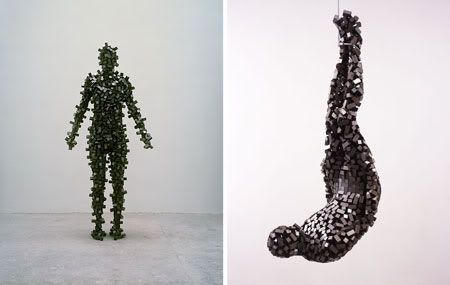


.png)











